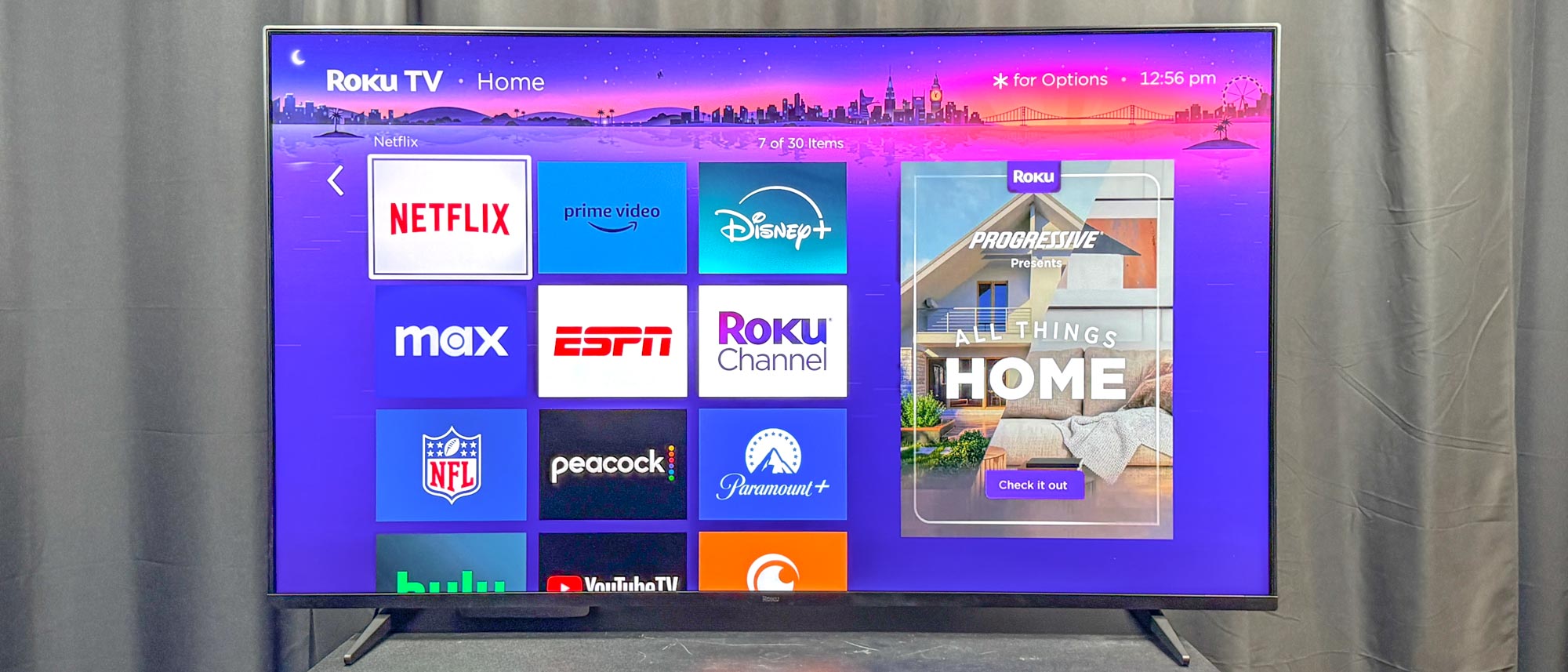Tom's Guide Verdict
The Roku Pro Series 4K TV is quite the stunner by a company largely known for its simple and intuitive streaming devices. Roku’s addition of Mini-LED technology makes all the difference in drawing out rich blacks and strong contrast, plus HDR performance is on another level. Unfortunately, the Pro largely lags in its poor audio support and off-axis viewing, plus there are several alternative TVs in its same class that prove just as good, if not better.
Pros
- +
Strong backlight performance
- +
Valiant gaming features
- +
Bespoke and simple interface
Cons
- -
Poor off-axis viewing
- -
Limited audio support
- -
Reflective glass screen
Why you can trust Tom's Guide
Off the back of its exciting debut in the Plus Series last year, Roku has yet again delivered with a well-priced QLED TV built for the budget-minded buyers in the form of the new Roku Pro Series 4K TV. It might not find a place among the best TVs just yet, but the Pro Series definitely delivers with its affordable pricing ($1,199 but often slashed down to just $999) and new Mini-LED backlighting.
With nearly a month of testing on the Roku Pro Series, I’ve come to find it’s a stellar pick for anyone shopping for a sub-$1,000 TV. The inclusion of Mini-LEDs makes all the difference in delivering precision contrast and deep blacks, while HDR support is at the top of its game. You also can’t overlook its slew of gaming features that make this a worthwhile pairing for modern console players.
Should you shell out for Roku’s Mini-LED-equipped Pro Series, or is it worth saving your money for one of the best OLED TVs instead? Find out in this full Roku Pro Series TV review.
Roku Pro Series review: Price and release date
The Roku Pro Series launched on April 10 2024 in the U.S, coming in a range of sizes that includes a 55-inch, 65-inch, and 75-inch configuration. It starts at just $899 for its 55-inch model, which comes dangerously close to the Hisense U7N’s $800 starting price. You can purchase the Roku Pro Series at practically any retailer, including Amazon, Best Buy, Walmart, and more.
This design marks the second TV released under Roku and is the very first for the brand to leverage Mini-LED backlighting. Although not available just yet, it will offer the extremely exciting Backdrops mode, which mirrors Samsung’s The Frame with a wide array of varied art and styles to choose from so your TV isn’t just a static black box.
- 55-inch Roku Pro Series Mini-LED TV (55R8B5) — $899.99 ($799 on sale)
- 65-inch Roku Pro Series Mini-LED TV (65R8B5) — $1,199.99 ($999 on sale)
- 75-inch Roku Pro Series Mini-LED TV (75R8B5) — $1,699.99 ($1,499 on sale)
As affordable as the 55-inch Pro Series might be, sitting at $899 (often slashed down to just $799 on discount), there are several cheaper alternatives in the space: the TCL QM7, which retails for just $700 for its 55-inch model, or the Hisense U6N that’s $600 (often slashed even lower to just $448) for the same size. These are, of course, limited in their features against the Pro Series, but are still value picks with Mini-LED technology.
Roku Pro Series review: Design
While Roku has had quite a bumpy year of late, what with data breaches making headlines and increased ads making its platform that much harder to enjoy, there’s one thing that can be said of the company: it’s headed in the right direction when it comes to its TV designs.
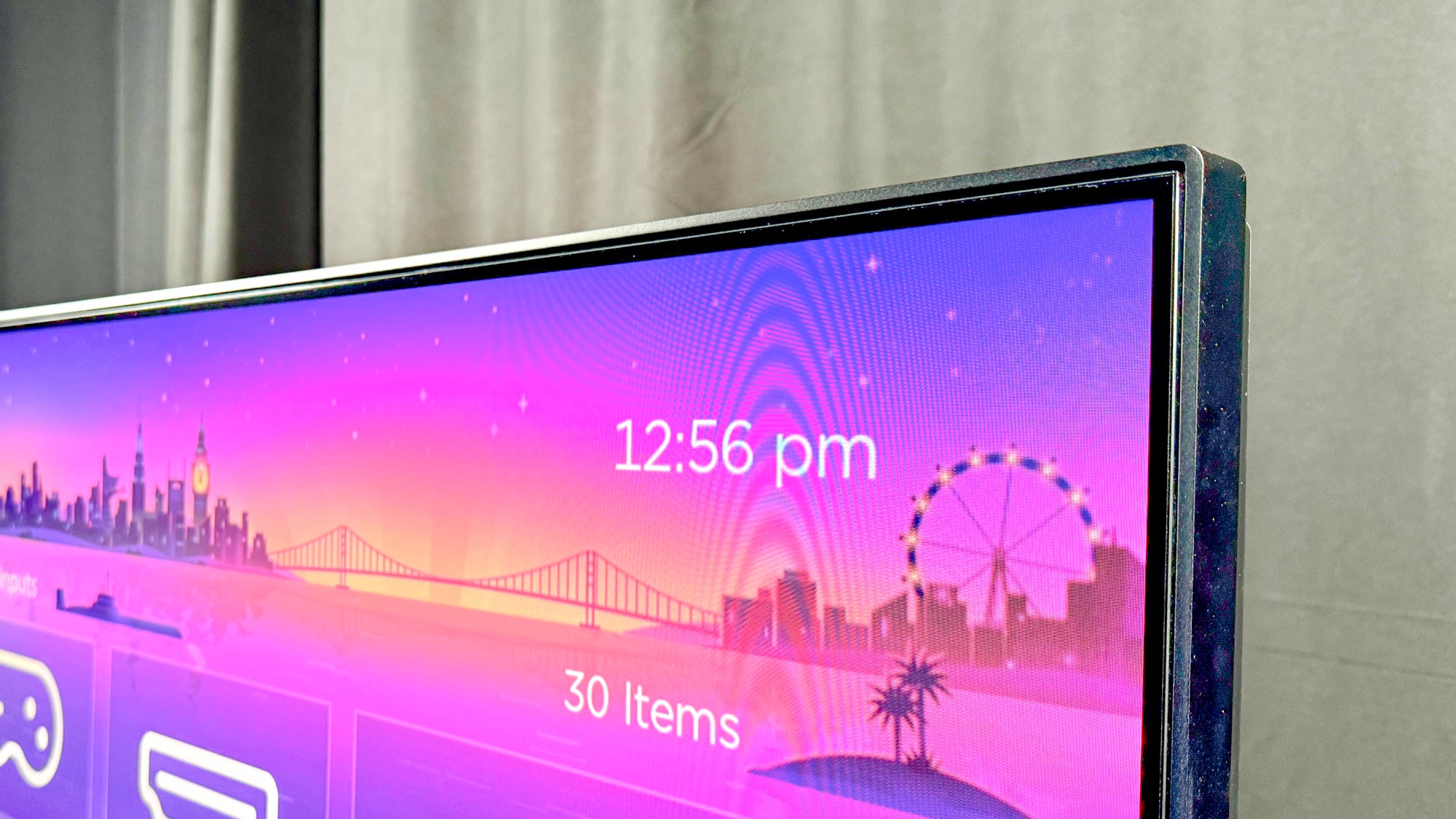
Last year’s Roku Plus Series sported a QLED panel, but for this year’s model, Roku is aiming for the stratosphere with deeper blacks, more vivid highlights, and general better picture quality on its new guise thanks to the aforementioned Mini-LED tech.
Unlike others in the space, it’s not quite bezel-less, but it does have a nice glossy panel design. Unfortunately, there’s limited anti-glare coating, so this can be a problem for those situated in a room with a lot of ambient sunlight or bright lights.
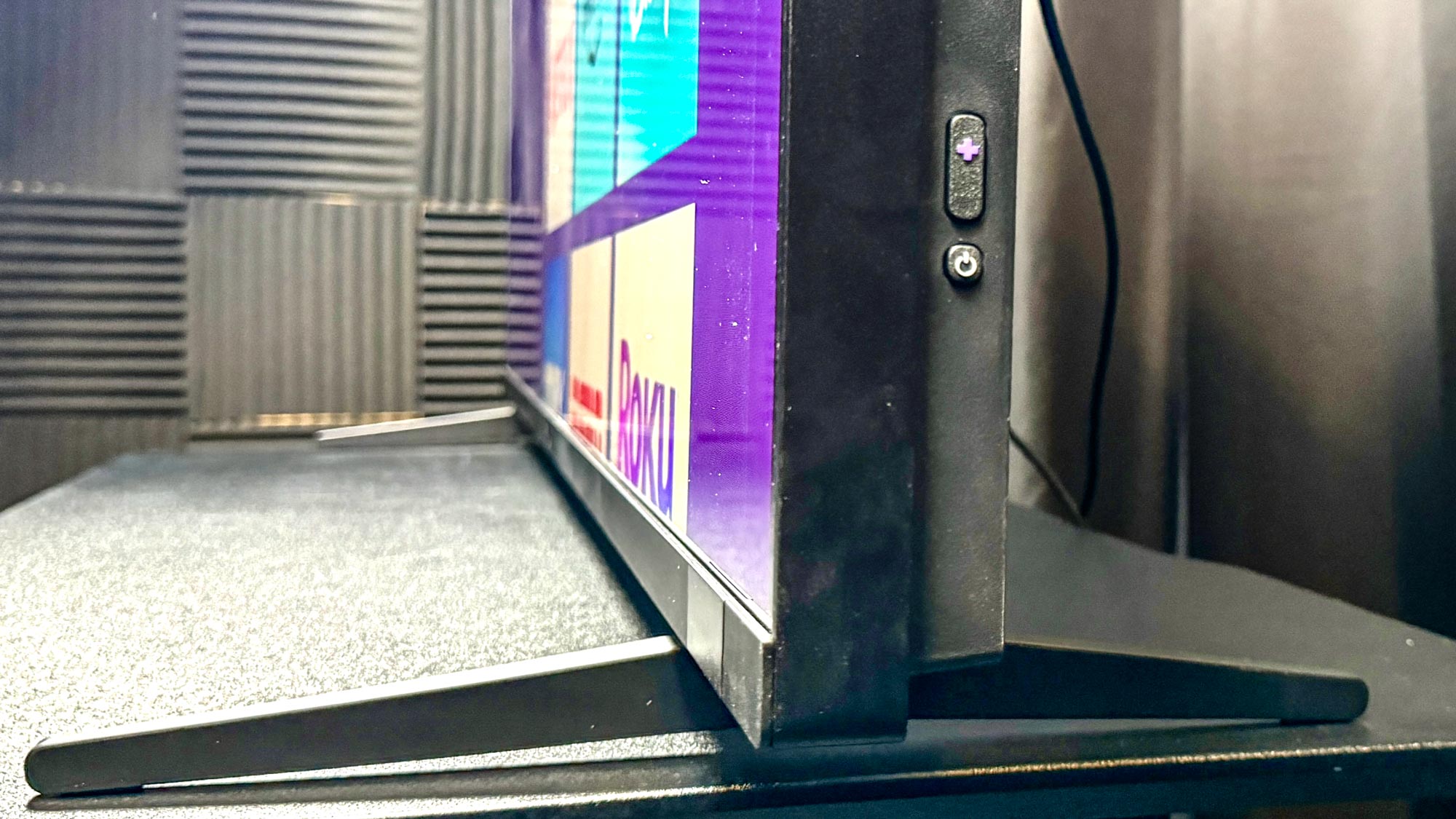
The Pro Series is slim, which varies across sizes, of course, but sits at 57.2-inches in width for its 65-inch model. It’s also a hefty bugger, weighing 62.3 pounds in the same configuration, which may require the aid of an additional person for set up.
The Roku Pro Series also has VESA mount compatibility that differs across sizes. The 65-inch model supports the VESA mount configuration of 400mm x 300mm, whereas the 55-inch model uses 200mm x 200mm and the 75-inch option is built on the 400mm x 400mm type. Check out our best TV mounts to find the perfect one that meets your TV’s size.
Roku Pro Series review: Ports
There’s little the Roku Pro Series leaves out in its slew of ports. You’ll find four HDMI ports on the back in tandem with one USB-A port, USB-C port, and an optical audio output. Only two of those four ports are HDMI 2.1 inputs (taking it out of the running for best HDMI 2.1 TVs), but that’s perfectly enough in the face of its dedicated eARC port, which sits at its fourth slot. This means you’re not sacrificing an HDMI 2.1 input for soundbar connectivity, which not every TV takes into consideration.
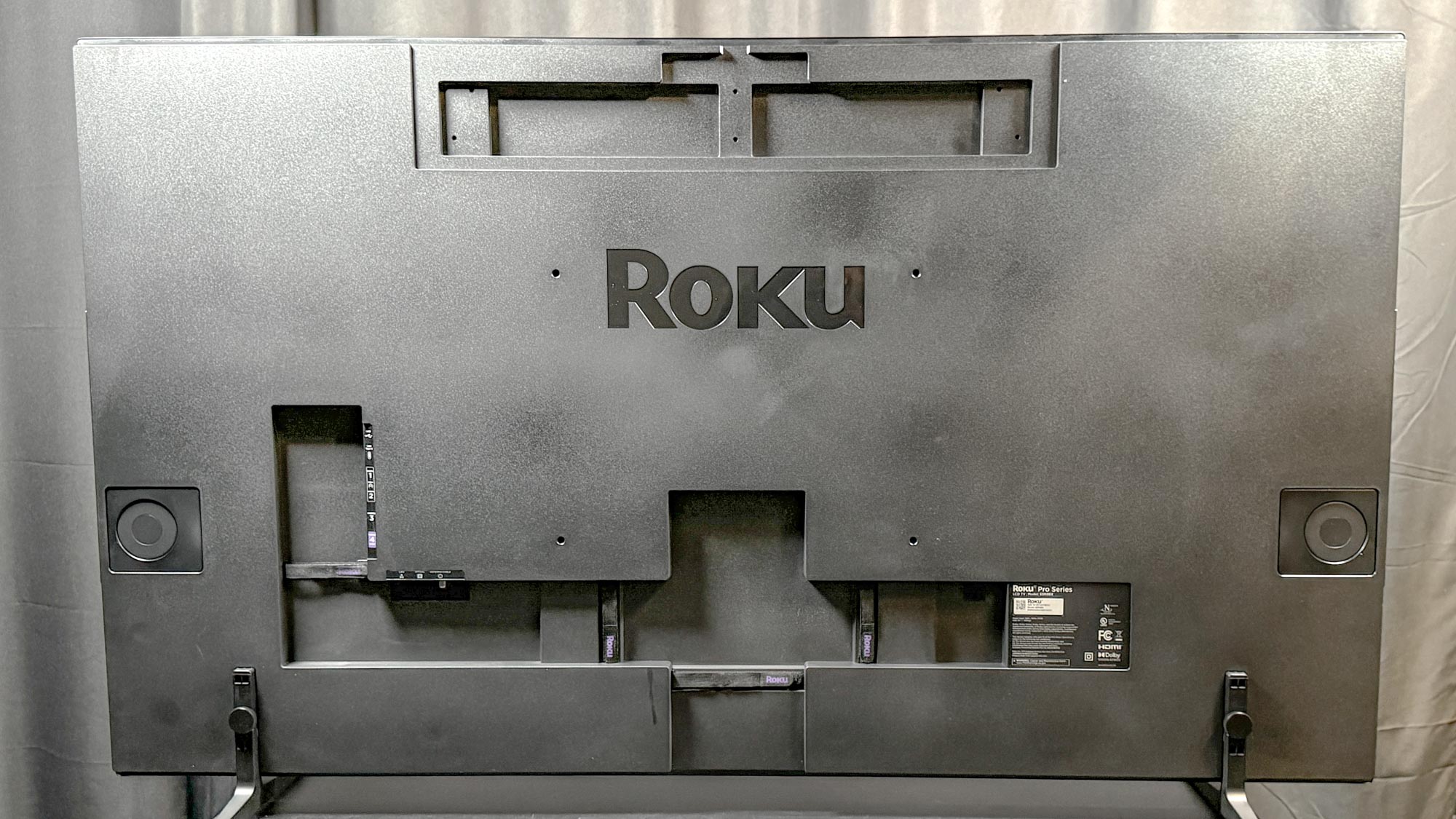
A cable/antenna and ethernet connection supporting Wi-Fi 6 (at 802.11ax) is also available slightly close to the bottom of the rear of the TV. There isn’t any dedicated ATSC 3.0 port for 4K broadcast compatibility, but this is fast proving common as even 2024 LG TVs are without the NextGen TV tuner.
Roku Pro Series review: Performance
With its newly added Mini-LEDs, the Roku Pro Series makes for one beautiful primary display. I tried it with a good variety of content, which included testing in both HDR and SDR, as well as watching everything from conventional TV shows and sports to anime to really give the Pro Series’ color accuracy a run for its money.
I was particularly impressed by its performance in darker shows and movies, namely “The Batman” and Netflix’s “Ripley.” The latter, a predominantly black and white series steeped in a brooding, mysterious atmosphere, really popped on the screen and wowed me with its inky blacks and precision contrast coverage.
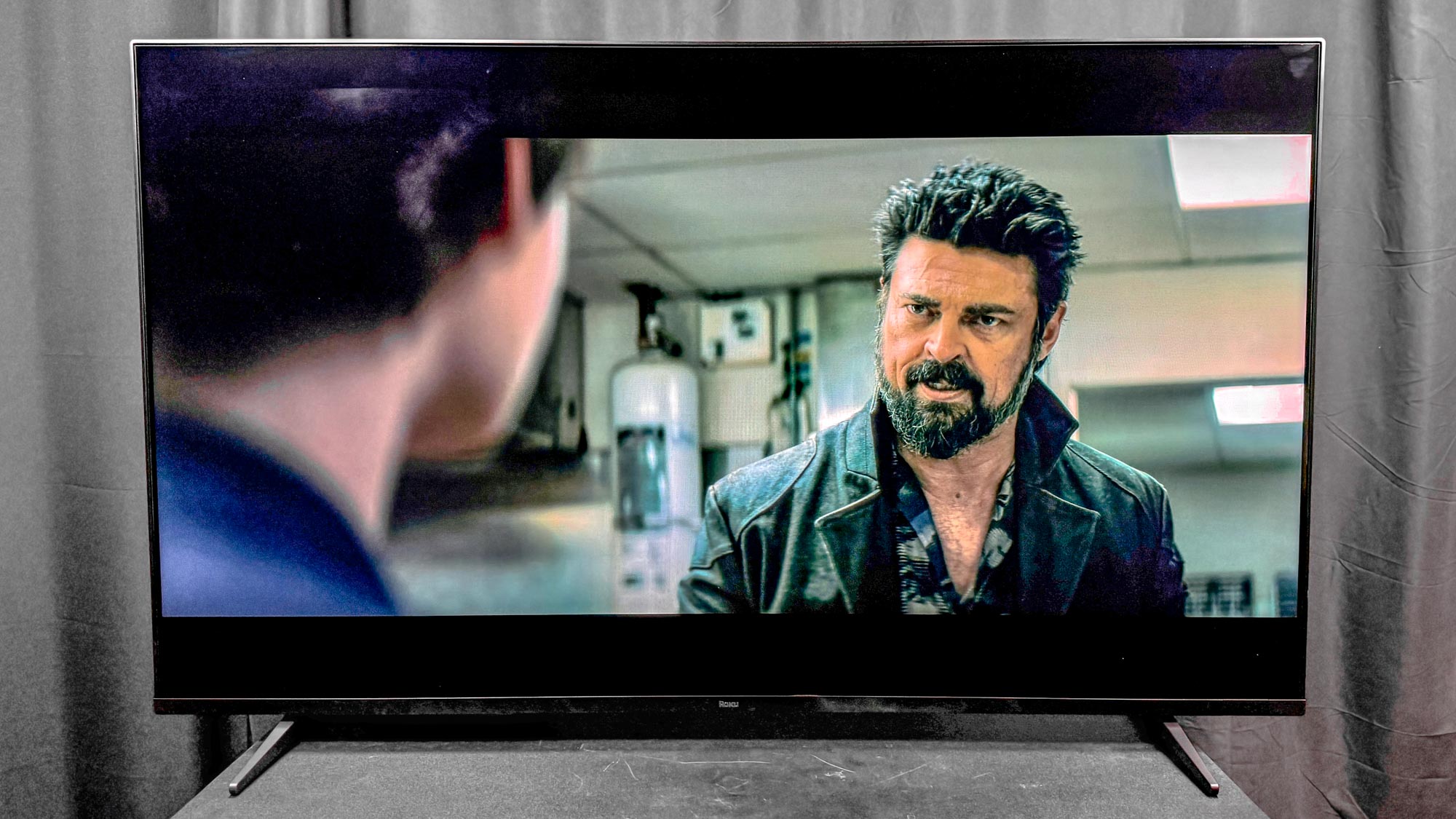
One thing I did note, however, was the poor performance in off-axis viewing. This is a byproduct of those beloved Mini-LEDs, and it really shows on this set. The Pro Series also suffers from minimal image processing woes, best of all witnessed in low-bitrate content. Its glossy panel also didn’t handle glare all too well, which unfortunately rears its ugly head in darker content most.
The best part about the Pro Series is its HDR performance. Take, for instance, the brilliance of “Dune: Part 2” in stunning HDR, with its awesome spectacle in massive fight scenes and sweeping dessert shots that bounce off the screen. With support for Dolby Vision IQ, HLG, and HDR10+, the Pro Series tackles HDR with stellar promise and this extends even into gaming.
Roku Pro Series review: Test results
To get some quantitative testing data we used an X-Rite i1 Pro spectrophotometer, a SpectraCal VideoForge Pro pattern generator, and Portrait Displays’ Calman calibration software to put the Roku Pro Series up against its toughest competitors: the Hisense U7N, TCL QM7, and Samsung Q70C QLED TV.
| Roku Pro Series | Hisense U7N | TCL QM7 (tested in Vivid) | Samsung Q70C | |
| SDR Brightness (10%, in nits) | 1355.625717 | 1241.0743 | N/A | 489.6542 |
| Delta-E (lower is better) | 2.5336 | 1.671 | 15.2166 | 1.9701 |
| Rec. 709 Gamut Coverage | 99.8303 | 99.9027 | N/A | 99.9055 |
| HDR Brightness (10%, in nits) | 1256.501508 | 1369.463542 | 1997.418437 | 510.4188565 |
| UHDA-P3 Gamut Coverage | 96.88 | 92.97 | 97.14 | 92.25 |
| Rec. 2020 Gamut Coverage | 81.77 | 75.32 | 78.54 | 68.27 |
| Input latency (in milliseconds) | 9.4 | 13.2 | 109.2 | 11.4 |
There’s a lot to love about the Roku Pro Series, but against the competition in terms of brightness, it’s got quite the uphill battle. Both the TCL QM7 and the Hisense U7N seemingly bring the oomph where it matters in their HDR brightness, but the Pro Series does well in delivering sound SDR brightness coverage.
Surprisingly, the Pro Series beats the competition with an incredibly low input latency, making it an ideal pick for gamers. Still, that rather high Delta-E of 2.5336 (a measurement of color accuracy where lower is better) is something to consider if you’re watching more colorful shows and movies.
Roku Pro Series review: Gaming
While it doesn’t have the 144Hz refresh rate of some of the best gaming TVs, the Roku Pro Series’ 120Hz panel is an adequate option for those who might want to save a bit for their gaming exploits.
Of course if you were to connect a PC to the Roku Pro Series, there is AMD FreeSync Premium Pro support for expert screen tearing negation. Plus, VRR and an input latency of 9.4ms means you’re keeping pace with the best of the best when it comes to gaming TVs. We threw a ton of varied games at the Pro Series using a PS5, including the likes of the Elden Ring: Shadow of the Erdtree, Spider-Man 2, Rise of Ronin, and others to spectacular results.
Again, there are better TVs out there for gaming, like the Hisense U8N, TCL QM8, or even the LG C4 OLED. But at sub-$1,000 (for the 55-inch and 65-inch models), the Roku Pro Series still wills out as a valid option for those on a tighter budget.
Roku Pro Series review: Audio
Despite its claim for enhanced audio, the Roku Pro TV simply does not have the most mind-blowing audio quality. It’s not terrible, as it does come equipped with Dolby Atmos and sports the new Roku Soundstage function that leverages side-firing speakers for deeper bass and more rich spatial effects, but it definitely doesn’t hold a candle to the best soundbars.
That being said, white its base audio is certainly passable, I wouldn’t recommend sticking with it for too long, as you’ll definitely get far improved performance with a soundbar or sound system.
Roku Pro Series review: Interface and apps
The Pro is built on the Roku interface, which remains one of the sleekest and strongest TV operating systems yet, one that will also work alongside your Roku smart home devices.
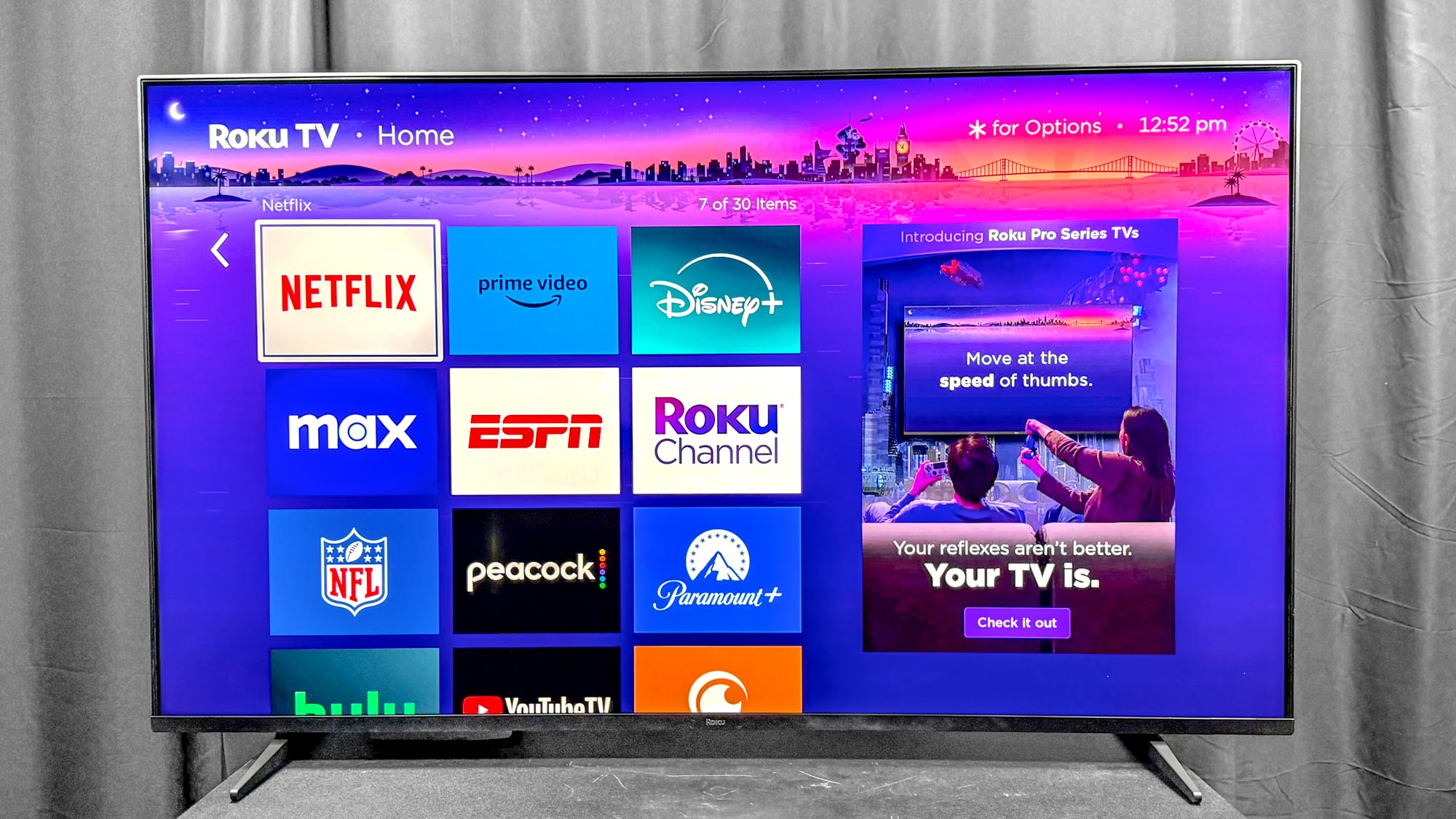
But where Roku falls by the wayside is in its advertisements, which can get incredibly annoying and in your face. While there are some ways of limiting ads on Roku devices, as found in the secret Roku menus, there’s obviously no foolproof approach for getting rid of them entirely.
Beyond these constraints, Roku’s interface remains just as solid as it always has been, offering all major apps and capabilities. You also simply can’t go wrong with Roku City, the firm’s dynamic wallpaper with ads and easter eggs galore
Roku Pro Series review: Remote
The new second-generation Roku Voice Remote Pro sports gorgeous new backlighting and personal shortcut buttons. It’s also got a rechargeable battery that uses USB-C fast charging and, according to Roku, sports 50% more battery life over its predecessor.
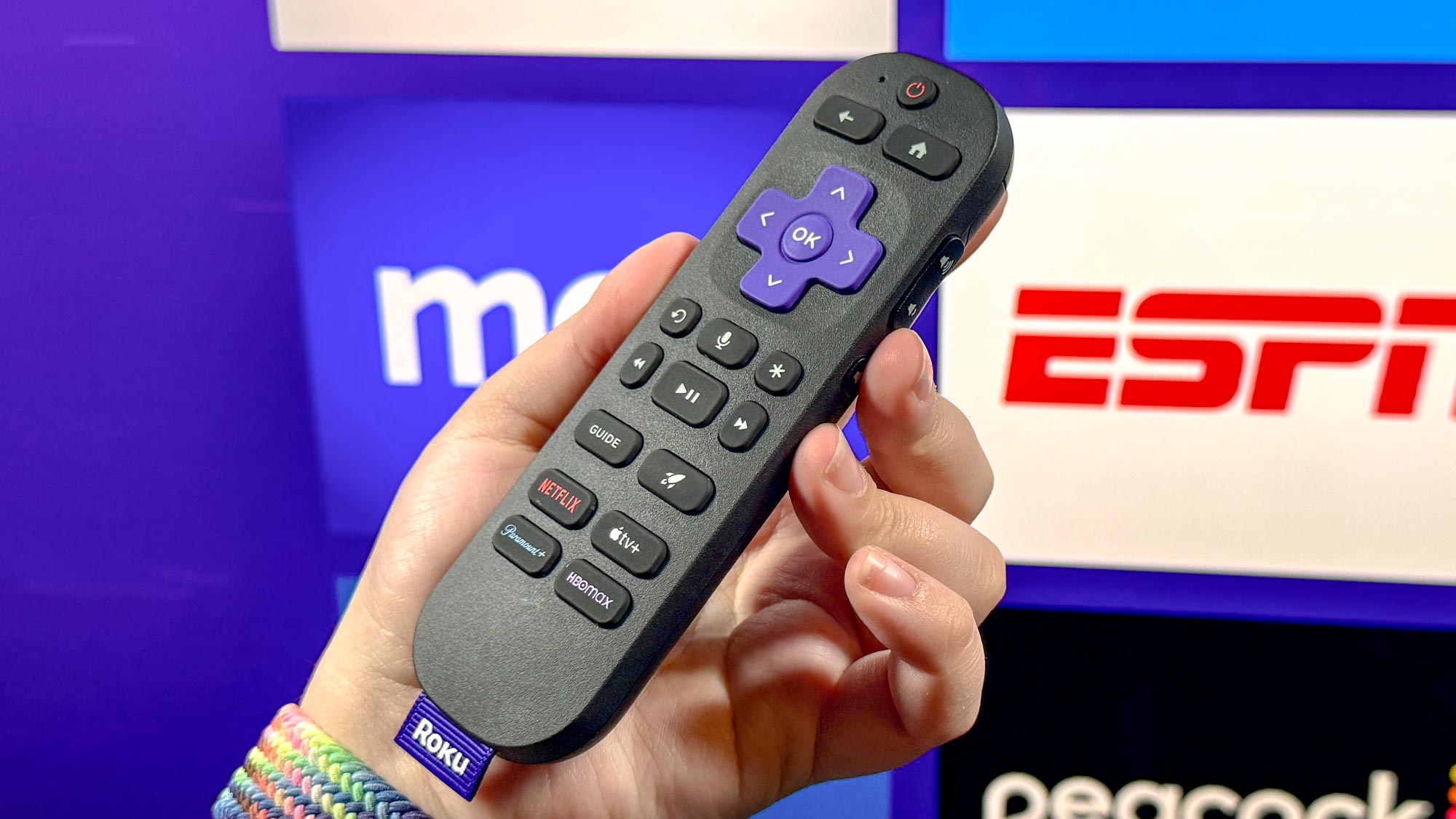
Given its name, you can expect to find a slew of voice-assisted controls on the remote, including both hands-free and push-to-talk functionality. There’s also a lost remote finder, which is pretty helpful for people like me who are prone to losing their remotes in the void of our couch cushions.
I think more TV manufacturers should pay attention to Roku’s remote design. It’s simple, small enough to fit in your palm without discomfort, and is rechargeable to boot. The addition of programmable buttons is also a nice touch that few (if any) rival companies offer.
Roku Pro Series review: Verdict
As its sophomore attempt, the Roku Pro Series is not one to knock. It’s built on quite the platform, leveraging Mini-LED backlighting for far superior blacks and contrasts that really makes it stand out. Plus, Roku’s interface still remains one of the best TV operating systems as it’s just so simple to use and provides a slew of incredible features for you to make your TV experience that much better.
But the Roku Pro Series isn’t a perfect offering, as the glossy panel finish is ripe for reflections in more ambient-lit environments, plus those awesome Mini-LEDs lead to really poor off-axis viewing. I also noticed its speaker system lacked real oomph.
Roku has some serious competition in the form of both TCL and Hisense. The latter’s newest U7N Mini-LED TV at 65-inch goes for just $799 on discount and TCL’s QM7 is just $200 more (and has more than four times the local dimming zones).
While I love the color and HDR performance presented by the Roku Pro Series, I fear the only real reason to buy is if you’re in-love with the Roku ecosystem, excited for its new remote, and want to get relatively good gaming performance for less than $1,000. If you want slightly better performance and don’t mind paying a bit more for it, then check out the Hisense U7N, Hisense U8N and the TCL QM7.

Ryan Epps is a Staff Writer under the TV/AV section at Tom's Guide focusing on TVs and projectors. When not researching PHOLEDs and writing about the next major innovation in the projector space, he's consuming random anime from the 90's, playing Dark Souls 3 again, or reading yet another Haruki Murakami novel.
